Manual Haier DW12-CBE6 IS Máquina de lavar louça
Precisa de um manual para o seu Haier DW12-CBE6 IS Máquina de lavar louça? Abaixo você pode visualizar e baixar gratuitamente o manual em PDF em português. Este produto tem atualmente 11 perguntas frequentes, 0 comentários e tem 0 votos. Se este não for o manual que você deseja, por favor contacte-nos.
Seu produto está com defeito e o manual não oferece solução? Vá a um Repair Café para obter serviços de reparo gratuitos.
Manual
Loading…


Loading…
Avaliação
Deixe-nos saber o que você pensa sobre a Haier DW12-CBE6 IS Máquina de lavar louça, deixando uma classificação do produto. Quer compartilhar suas experiências com este produto ou fazer uma pergunta? Por favor, deixe um comentário na parte inferior da página.Mais sobre este manual
Entendemos que é bom ter um manual em papel para o seu Haier DW12-CBE6 IS Máquina de lavar louça. Você sempre pode baixar o manual em nosso site e imprimi-lo você mesmo. Se desejar um manual original, recomendamos que entre em contato com Haier. Eles podem fornecer um manual original. Você está procurando o manual do seu Haier DW12-CBE6 IS Máquina de lavar louça em outro idioma? Escolha o seu idioma preferido em nossa página inicial e pesquise o número do modelo para ver se o temos disponível.
Especificações
| Marca | Haier |
| Modelo | DW12-CBE6 IS |
| Categoria | Máquinas de lavar louça |
| Tipo de arquivo | |
| Tamanho do arquivo | 1.54 MB |
Todos os manuais para Haier Máquinas de lavar louça
Mais manuais de Máquinas de lavar louça
Perguntas frequentes sobre Haier DW12-CBE6 IS Máquina de lavar louça
Nossa equipe de suporte pesquisa informações úteis e respostas a perguntas frequentes sobre produtos. Se você encontrar algum dado incorreto em nossas perguntas frequentes, informe-nos usando nosso formulário de contato.
Mesmo depois da minha lava-louças terminar o seu ciclo, o recipiente que contém a pastilha não havia aberto. Como isso é possível? Verificado
Este problema muitas vezes é causado por pratos que bloqueiam o recipiente. Verifique isto antes de ligar o lava-louças.
Isso foi útil (7973) Consulte Mais informaçãoA máquina de lavar loiça não aquece mais a água. Por que? Verificado
É provável que o elemento aquecedor esteja com defeito. Substitua-o. Em caso de dúvida, entre em contato com o fabricante.
Isso foi útil (7447) Consulte Mais informaçãoPosso usar sal comum na minha máquina de lavar louça? Verificado
Não, o sal comum pode conter substâncias que podem causar danos ao seu aparelho.
Isso foi útil (3184) Consulte Mais informaçãoPreciso enxaguar meus pratos antes de colocá-los na máquina de lavar loiça? Verificado
Não é necessário enxaguar os pratos, mas é necessário remover quaisquer restos grandes, duros e gordurosos. Isso pode entupir o dreno com o tempo.
Isso foi útil (1289) Consulte Mais informaçãoPosso abrir a máquina de lavar louça enquanto ela está funcionando? Verificado
A maioria das máquinas de lavar louça está equipada com um sistema de interrupção de água, fazendo com que o programa pare imediatamente quando a porta for aberta e não haverá saída de água. Com alguns modelos, isso pode causar problemas ao longo do tempo. Com as máquinas de lavar louça embutidas, é possível que a abertura frequente da máquina de lavar louça durante o funcionamento possa causar danos por água aos armários circundantes devido ao vapor libertado.
Isso foi útil (1036) Consulte Mais informaçãoDevo abrir a máquina de lavar louça depois de terminar de funcionar para que a louça seque mais rápido? Verificado
Isso depende do tipo e da localização da máquina de lavar louça. Algumas máquinas de lavar louça estão equipadas com um recurso que seca a louça após o programa de lavagem. Nesse caso, abrir a máquina de lavar louça não terá valor acrescentado. Com as máquinas de lavar louça embutidas, é possível que a abertura frequente da máquina de lavar louça durante o funcionamento possa causar danos por água aos armários circundantes devido ao vapor libertado.
Isso foi útil (832) Consulte Mais informaçãoDepois de a máquina de lavar louça terminar o ciclo, os pratos de plástico ainda estão molhados, mas o resto não. Por que é que? Verificado
O plástico é um mau condutor de calor, permitindo que os produtos esfriem rapidamente. A umidade que permanece nele evapora muito menos do que, por exemplo, em cerâmica ou metal.
Isso foi útil (748) Consulte Mais informaçãoPosso conectar uma máquina de lavar louça a um cabo de extensão? Verificado
Os aparelhos que requerem grande quantidade de energia, como uma máquina de lavar louça, não podem ser conectados a todos os cabos de extensão. Veja qual é o consumo de energia da máquina de lavar louça, que é indicado em Watt, e verifique se o cabo de extensão pode suportar isso. Existem cabos de extensão com cabos mais grossos que são feitos para lidar com aparelhos maiores.
Isso foi útil (678) Consulte Mais informaçãoÉ um problema ter arranhões no metal no interior da máquina de lavar louça? Verificado
O interior da maioria das máquinas de lavar louça é feito de aço inoxidável e não é afetado por arranhões.
Isso foi útil (673) Consulte Mais informaçãoPosso colocar panelas com Teflon na máquina de lavar louça? Verificado
Sim você pode. No entanto, a frigideira vai se desgastar mais rapidamente do que quando é limpa à mão. Ao limpar uma panela com Teflon à mão, nunca use um esfregão, mas use uma esponja ou pano macio.
Isso foi útil (664) Consulte Mais informaçãoPosso colocar objetos de madeira, como espátulas e tábuas de cortar, na máquina de lavar louça? Verificado
Não. Objetos de madeira podem ser danificados ou empenados na máquina de lavar louça. Além disso, as fibras de madeira que se soltam podem danificar a máquina de lavar louça. As tábuas de corte de madeira geralmente são feitas com cola que pode se soltar após várias vezes na máquina de lavar louça.
Isso foi útil (663) Consulte Mais informação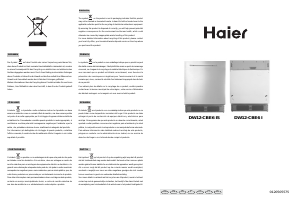

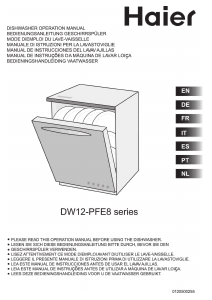
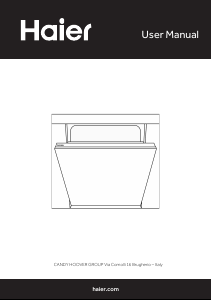

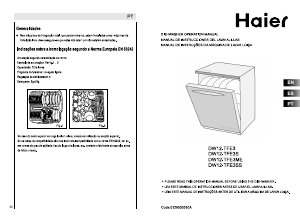
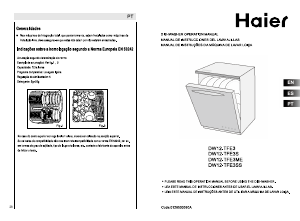
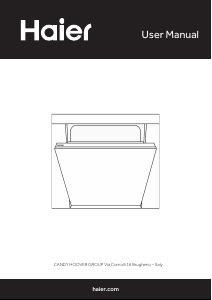
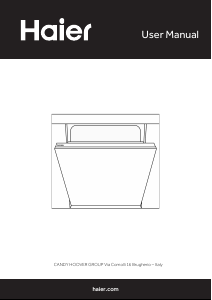
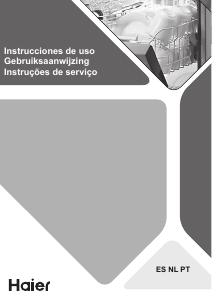
Participe da conversa sobre este produto
Aqui você pode compartilhar o que pensa sobre Haier DW12-CBE6 IS Máquina de lavar louça. Se você tiver alguma dúvida, primeiro leia atentamente o manual. A solicitação de manual pode ser feita através do nosso formulário de contato.